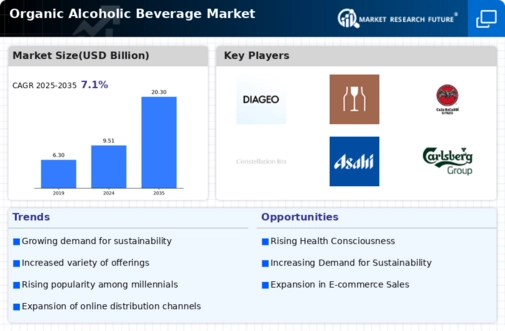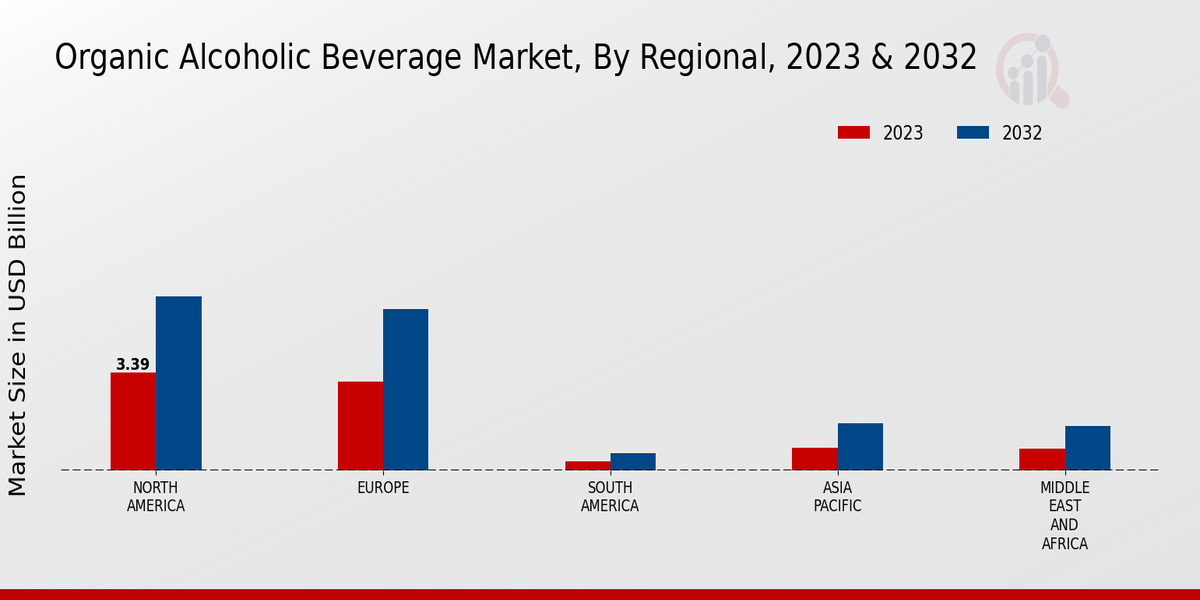Market Growth Projections
The Global Organic Alcoholic Beverage Market Industry is projected to experience substantial growth over the next decade. With a market value expected to reach 20.3 USD Billion by 2035, the industry is on a trajectory of significant expansion. This growth is underpinned by a compound annual growth rate of 7.13% from 2025 to 2035, indicating a robust demand for organic alcoholic beverages. The increasing consumer inclination towards organic products, coupled with innovative marketing strategies, is likely to drive this upward trend, positioning the industry favorably in the global market.
Rising Health Consciousness
The increasing awareness of health and wellness among consumers appears to be a significant driver for the Global Organic Alcoholic Beverage Market Industry. As individuals become more discerning about their dietary choices, the demand for organic alcoholic beverages, which are perceived as healthier alternatives, is likely to rise. This trend is particularly evident in regions where consumers prioritize natural ingredients and sustainable production methods. The market is projected to reach 9.51 USD Billion in 2024, reflecting a growing preference for organic options that align with healthier lifestyles.
Innovative Product Offerings
Innovation in product development is a crucial factor propelling the Global Organic Alcoholic Beverage Market Industry. Manufacturers are continually experimenting with new flavors, ingredients, and brewing techniques to cater to evolving consumer tastes. This creativity not only enhances product diversity but also attracts a broader audience, including younger demographics who seek unique drinking experiences. The introduction of organic craft beers, spirits, and wines exemplifies this trend. Such innovations are expected to contribute to a compound annual growth rate of 7.13% from 2025 to 2035, reflecting the industry's adaptability and responsiveness to market demands.
Changing Consumer Preferences
The evolving preferences of consumers, particularly among millennials and Gen Z, are reshaping the Global Organic Alcoholic Beverage Market Industry. These demographics tend to favor products that align with their values, such as sustainability, health, and authenticity. As a result, there is a noticeable shift towards organic alcoholic beverages that reflect these ideals. This trend is likely to drive market expansion, as younger consumers increasingly seek out brands that resonate with their lifestyle choices, further solidifying the position of organic options in the alcoholic beverage sector.
Sustainable Production Practices
Sustainability is becoming a cornerstone of consumer preferences, influencing the Global Organic Alcoholic Beverage Market Industry. Producers are increasingly adopting eco-friendly practices, such as organic farming and responsible sourcing, to meet the expectations of environmentally conscious consumers. This shift not only enhances brand reputation but also attracts a loyal customer base that values sustainability. As a result, the market is anticipated to experience robust growth, with projections indicating a value of 20.3 USD Billion by 2035, driven by the demand for products that are both organic and sustainably produced.
Regulatory Support for Organic Products
Government regulations that promote organic farming and production are likely to bolster the Global Organic Alcoholic Beverage Market Industry. Many countries are implementing policies that support organic agriculture, providing incentives for producers to transition to organic practices. This regulatory framework not only enhances the credibility of organic products but also encourages consumer trust. As a result, the market is poised for growth, with an anticipated increase in organic alcoholic beverage offerings that comply with stringent organic standards, thereby appealing to a wider consumer base.
























Leave a Comment